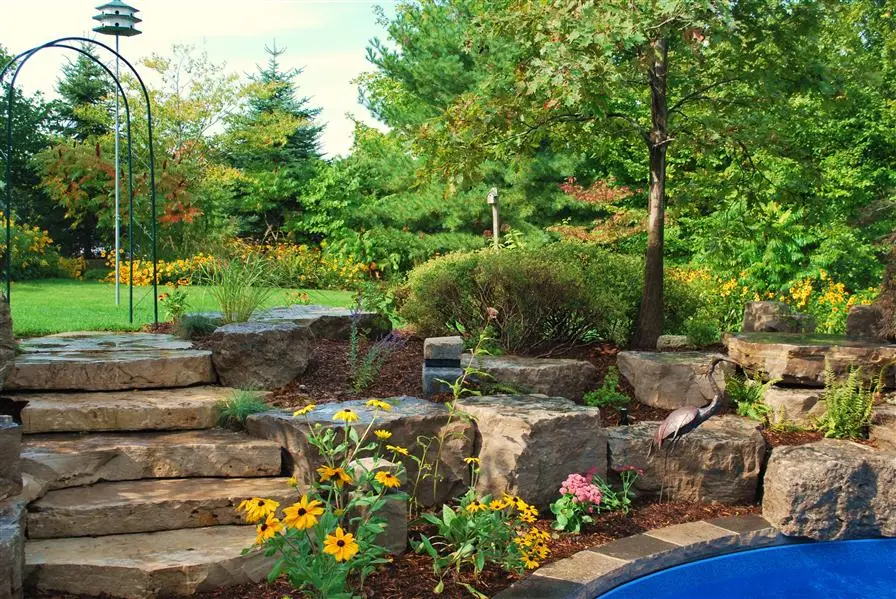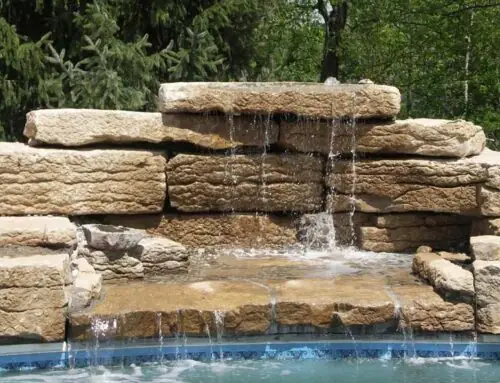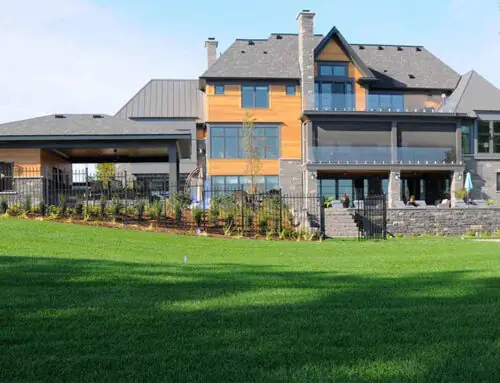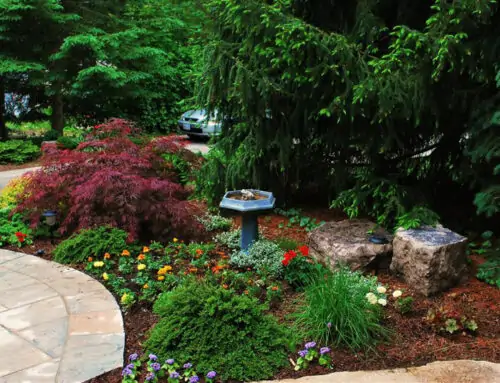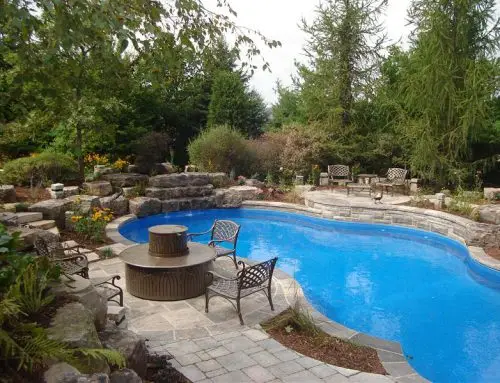It’s finally time to invest in your property – but where do you even begin? You’ve called a couple of different landscapers but are getting confused when they mention hardscaping and softscaping. You know they’re both primary elements of an outdoor space but don’t really know what they entail.
Together, let’s break down the difference between hardscape and softscape landscaping so that you can make the best decisions for your backyard.
What Is Hardscaping?
Hardscaping is just as it sounds – the hard, unmovable stuff that makes up your yard. Concrete, brick patios, stone walkways, retaining walls, gates, pools, and water features are all examples of hardscape design elements. The overall intention of hardscaping is to place items that will reduce potential erosion and keep the ground intact.
Hardscape elements can be natural, like stone, or manufactured, such as outdoor planters. But all of them must be solid and unchanging.
Depending on what material it’s made of, hardscaping can create a different effect on the environment. For example, pavement stops water from soaking into the soil, whereas mulch allows it to happen.
What Is Softscaping?
As the organic elements of the landscape, softscaping is done after the hardscaping. These features are either permanent or temporary, with examples including topsoil, flowers, plants, mulch, trees, and shrubs. Lighting is another softscaping example that adds a decorative element to a property.
Unlike hardscaping elements, softscaping is quite literally softer to the touch. Think about blades of grass and leaves of perennials – they’re much softer to feel than rocks and pavement!
These living, growing landscape components are constantly changing as they grow and adapt to our climate and other conditions.
Incorporating Hardscaping and Softscaping Into Your Landscape Design
Creating a complete, finished landscaping design involves integrating the proper combination of both hardscape and softscape. And without a professional’s help, this balance can be difficult to achieve. However, there are some key tips to keep in mind:
- Make Full Use of Your Space – Don’t forget to go vertical! Growing shrubs or trees are perfect for high areas, and low retaining walls can create extra seating where necessary.
- Choose a Focal Point – Each outdoor area should have its own focal point surrounded by different landscaping elements. Planters, graded ground, and shrubs are all great examples to create curb appeal at your entrance.
- Consider Your Environment – Incorporating hardscape into your front and back yards or creating beds of drought-tolerant plants can help dry areas.
- The Amount of Maintenance – Think about the amount of upkeep you want to complete in your yard in future seasons. For example, planting annuals is a lot more work than perennials and can cost more in the end, too.
- Complete Your Plan Correctly – Hardscaping should be done before any softscaping begins. Avoid going overboard to create the best balance between the two elements.
Contact our team today for more help with incorporating hardscaping and softscaping into your property.

